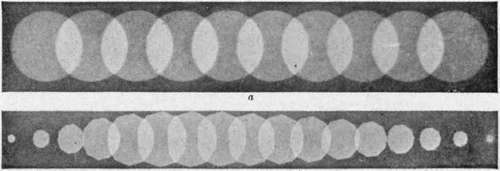Characteristics Of Shutters Located At The Lens
Description
This section is from the book "Airplane Photography", by Herbert E. Ives. Also available from Amazon: Airplane photography.
Characteristics Of Shutters Located At The Lens
Of the various shutters located at the lens the most common is the type that is clumsily but descriptively termed the "between-the-lens" shutter. This is composed of thin hard rubber or metal leaves or sectors which overlap and which are pulled open to make the exposure. It may require two operations, one for setting and one for exposing, or it may, as in some makes, set and expose by a single motion. Clock escapements, or some form of frictional resistance, are depended on to control the interval between opening and closing. This shutter is the one almost universally employed on small hand cameras and on all lenses up to about two inches diameter. It gives speeds sometimes marked as high as 3-^0 second, although usually not over two on actual test.
Between-the-lens shutters have been used to some extent on the shorter focus (up to 25 centimeter) aerial cameras, notably in the Italian service. They suffer, however, from two limitations. In the first place we have not yet solved the mechanical problems met with in trying to make the shutter of large size (as for 50 centimeter F/6 lenses) at the same time to give high speeds. In the second place the efficiency of the type is low because a large part of the exposure time is occupied by the opening and closing of the sectors.
If we define the efficiency of a shutter as the ratio of the amount of light it transmits during the exposure to the efficiency high-speed shutter for photographing moving objects on the groundórailway trains or racing automobilesóhad already led to the development of the focal-plane shutter. This is a type peculiarly adapted to the problems of the airplane camera. It consists essentially of a curtain, running at high speed close to the photographic plate, the exposure being given by a narrow rectangular slot.
If the focal-plane shutter is in virtual contact with the sensitive surface the efficiency, as defined above, is 100 per cent., since the whole cone of rays from the lens illuminates the plate during the whole time of exposure. But if the curtain is not carried close to the plate the efficiency falls amount of light it would transmit were it wide open during the whole period, then the efficiency of the ordinary between-the-lens shutter is of the order of 60 per cent. This means 1.6 times the motion of the image for the same photographic action that we should have with a perfect shutter. The accompanying photographic record (Fig. 20) of the opening and closing process of this type of shutter clearly illustrates its deficiencies.

Fig. 20. - Effective lens opening at equal intervals of time: (a) during focal plane shutter exposure; (b) during between-the-lens shutter exposure.
Continue to:
- prev: Chapter V. The Shutter. Permissible Exposure In Airplane Photography
- Table of Contents
- next: Characteristics Of The Focal Plane Shutter
Tags
camera, lens, airplane, aerial, film, exposure, photography, maps, birdseye
